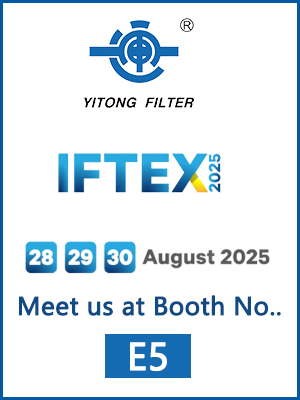May. 14, 2024
Sintered metal filters are critical components in numerous industrial applications due to their robustness, reliability, and efficiency in filtering contaminants. These filters are made through a process called sintering, which involves the fusion of metal particles under heat without reaching the point of melting. This technique results in a porous structure, offering unique properties that are advantageous for filtration purposes. Let's delve into the working principle of sintered metal filters in detail.
Manufacturing Process of Sintered Metal Filters
The manufacturing process of sintered metal filters begins with selecting appropriate metal powders, which could include stainless steel, bronze, nickel, titanium, or other alloys. These powders are carefully chosen based on the required properties such as corrosion resistance, mechanical strength, and thermal stability.
Mixing and Blending: The metal powders are mixed to achieve a homogeneous blend. This step ensures consistent properties throughout the filter material.
Compacting: The mixed powders are then compacted into a desired shape using a mold. This compaction process can be performed at room temperature or under slightly elevated temperatures, depending on the material and desired density.
Sintering: The compacted metal is heated in a controlled atmosphere furnace. The temperature is raised just below the melting point of the metal. During this stage, the metal particles bond together at their contact points, creating a rigid structure with interconnected pores. The size and distribution of these pores can be controlled by adjusting the sintering parameters and the initial particle size.
Post-Sintering Processes: After sintering, the filters may undergo additional treatments such as machining, surface treatment, or thermal annealing to achieve the final desired properties and dimensions.
Filtration Mechanism
The filtration mechanism of sintered metal filters relies on their porous structure, which allows fluids to pass through while trapping solid particulates. The key mechanisms involved in the filtration process include:
Surface Filtration: Particles larger than the pores are captured on the surface of the filter. This is effective for removing larger contaminants and preventing clogging of the internal pore structure.
Depth Filtration: Smaller particles penetrate the surface and are trapped within the interconnected pore network. The tortuous paths within the filter increase the likelihood of particles being captured through mechanical entrapment and adsorption.
Diffusion and Impaction: Fine particles, especially those in gas streams, are captured by diffusion, where they randomly move and collide with the pore walls, or by impaction, where they are unable to follow the fluid streamlines and collide with the filter media.
Advantages of Sintered Metal Filters
Sintered metal filters offer several advantages that make them suitable for demanding applications:
Durability and Strength: The metallic nature and sintering process confer high mechanical strength, making these filters resistant to high pressures and mechanical stresses.
Thermal Stability: Sintered metal filters can withstand high temperatures, making them ideal for applications involving hot gases or liquids.
Corrosion Resistance: Depending on the choice of metal, these filters can exhibit excellent resistance to corrosion, suitable for use in aggressive chemical environments.
Cleanability and Reusability: Unlike disposable filters, sintered metal filters can be cleaned and reused multiple times, providing long-term economic benefits. Cleaning methods include backflushing, ultrasonic cleaning, and chemical cleaning.
Customizability: The pore size and distribution can be precisely controlled during manufacturing, allowing for tailored filtration solutions to meet specific application requirements.
Applications
Sintered metal filters find applications across various industries:
Chemical and Petrochemical: Filtration of corrosive liquids and gases, catalyst recovery.
Pharmaceutical: Sterilizing filtration, clarification of solutions.
Food and Beverage: Filtration of liquids and gases, ensuring product purity.
Aerospace and Automotive: Hydraulic fluid filtration, air and gas purification.
Water Treatment: Filtration of drinking water, wastewater treatment.
Conclusion
The working principle of sintered metal filters is rooted in their unique manufacturing process and the resulting porous structure. These filters provide robust, efficient, and versatile filtration solutions across numerous industries, thanks to their durability, thermal stability, and customizable properties. Understanding their operation and benefits can help in selecting the right filtration technology for specific industrial needs.

